Our Experience at The Patek Philippe Museum: Earth's Horological Hub

While in Geneva for Watches and Wonders, Everest CEO Michael DiMartini and I spent an afternoon at the Patek Philippe Museum. During what felt like the fastest three hours of my life, we ran the horological gamut, admiring everything from the earliest clocks with minutes hands to the 33-complication Patek Philippe Caliber 89. The museum is widely considered to be one of the world’s premier horological collections, exhibiting 500 years of timekeeping history. Before we look at some watches, let’s talk about the museum itself. How did Philippe Stern choose to display his collection? Oh that’s right – this is one man’s collection.
The Patek Philippe Museum
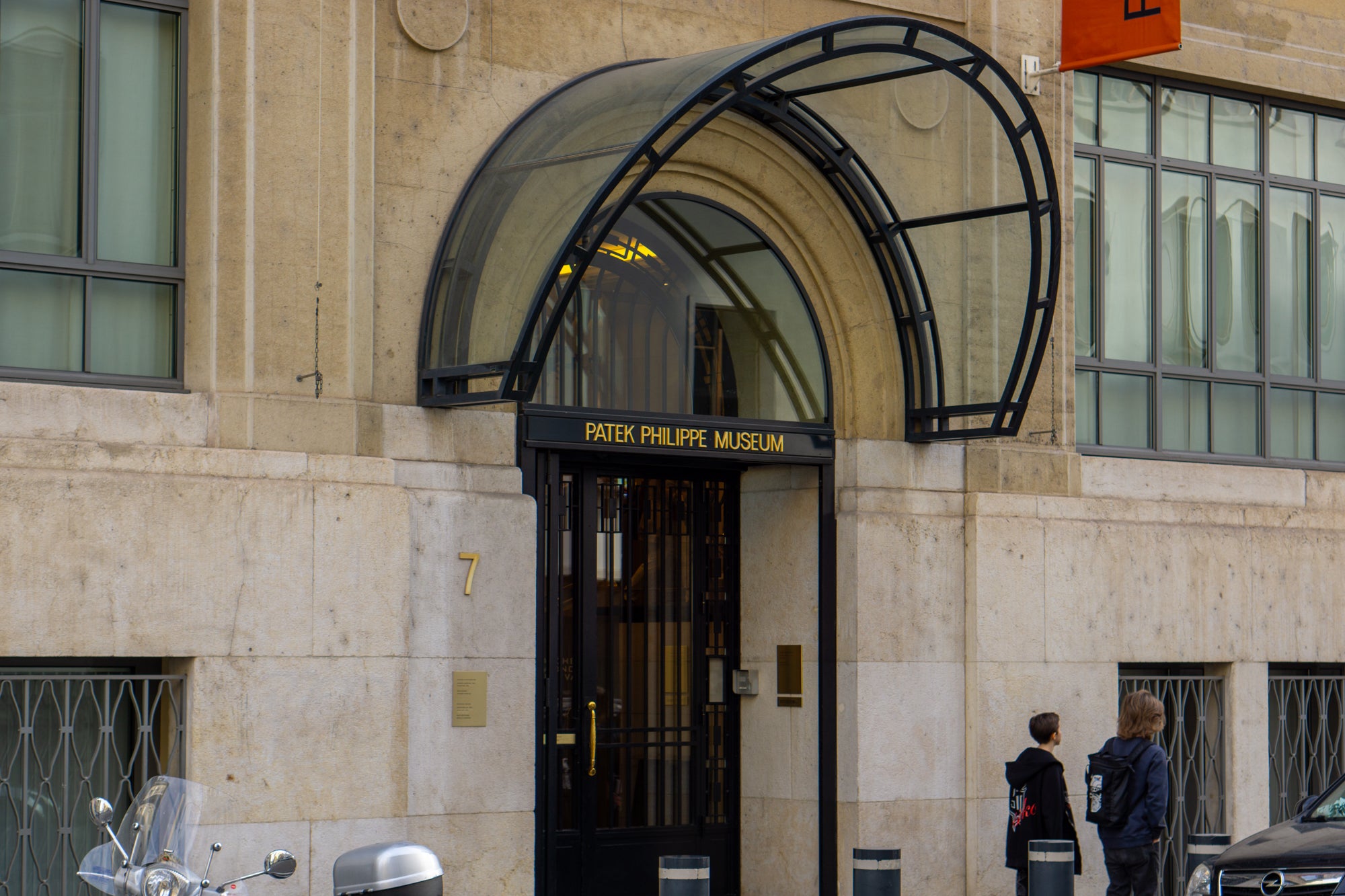
The Patek Philippe Museum exhibits watches, clocks, enamelwork, high-jewelry, and other rare handcrafts collected by Philippe Stern: the third-generation Stern to run Patek Philippe and the brand’s Honorary President. Stern began collecting in the mid-late ‘70s. Perhaps unsurprisingly, his collecting journey began with complicated Patek Philippe watches. Eventually, Stern branched out to a plethora of other watchmakers, and soon enough, he found himself collecting European handcrafts upwards of 500 years old.
By 2001 – the inaugural year of the Patek Philippe Museum – Stern had amassed a collection that represented not just his family’s brand, but the centuries-long tradition of European horology and hand craftsmanship. Located in the heart of Geneva, just south of the Rhône, the Patek Philippe Museum is an immaculate display of Stern’s ever-evolving collection.
The Third Floor (Historical Archives + Enamelwork)
The museum’s three-floor exhibition is thoughtfully-ordered to present as a story. The third floor, where the tour begins, features no more than two timepieces. In lieu of watches, you’ll find Patek Philippe’s historical archives surrounding hundreds of miniature enamel-painted portraits and snuff boxes. As we browsed the portraits, my impatient brain wondered why I hadn’t seen a watch yet. Why so much enamelwork?
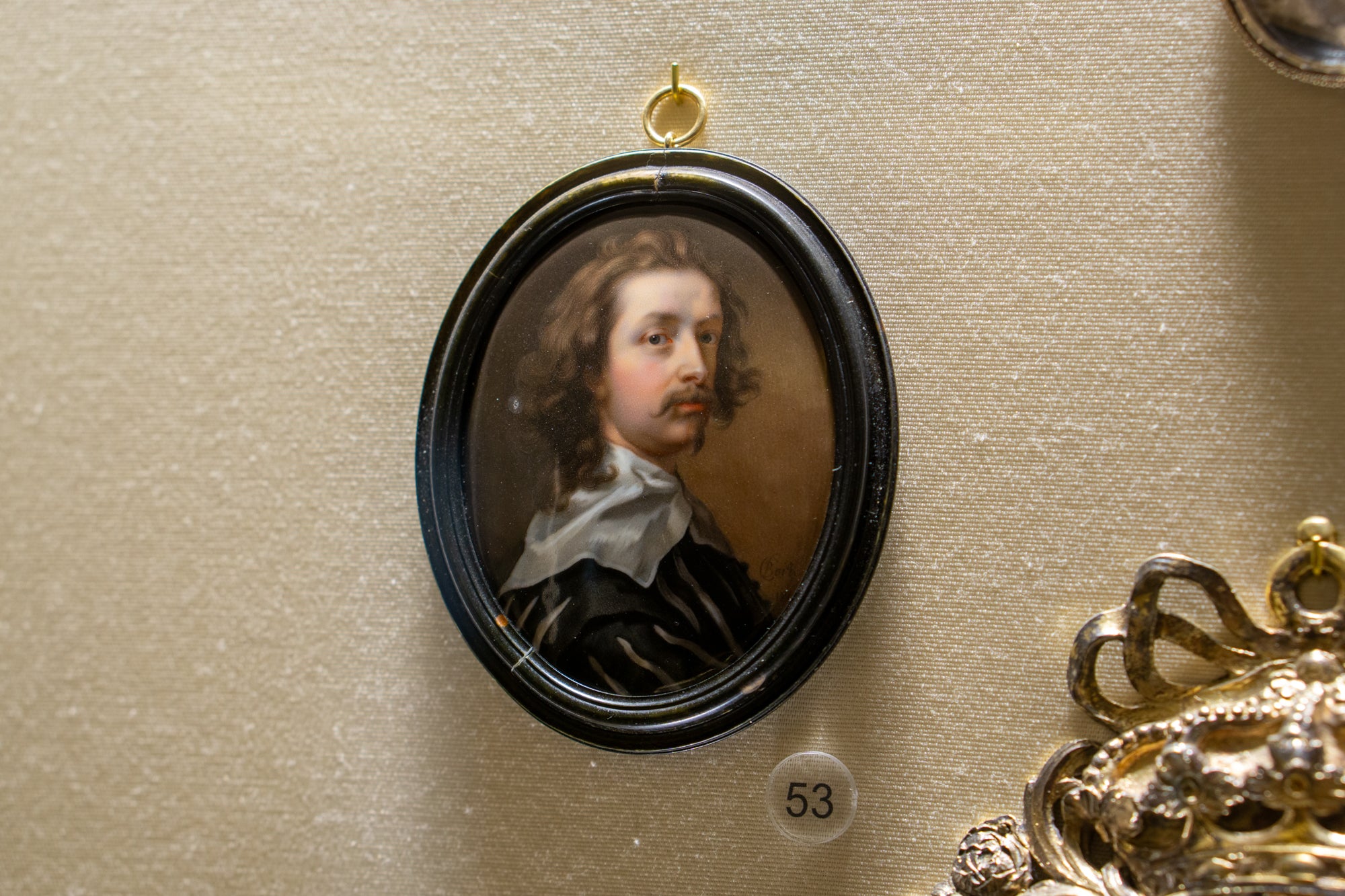
My impatience shifted to amazement as our tour guide explained the enamelwork’s significance. As it turns out, fine enamelwork propelled Swiss (and European) horology from the 16th century onward. In 1541, Protestant reformist John Calvin banned the wearing of jewelry in Switzerland. Sure, this was a drag for jewelry lovers, but it was devastating for jewelers themselves. Luckily, their skills wouldn’t go to waste. Calvin allowed Swiss citizens to wear timepieces due to their functionality, specifically their function of getting people to church on time. Enamel artists, jewelers, and other hand craftspeople quickly pivoted to watches and clocks out of necessity; it was the only permitted application of their skills. This dynamic set the stage for high-jewelry’s long-standing relationship with watchmaking, and as such, it set the stage for the rest of the Patek Philippe Museum.
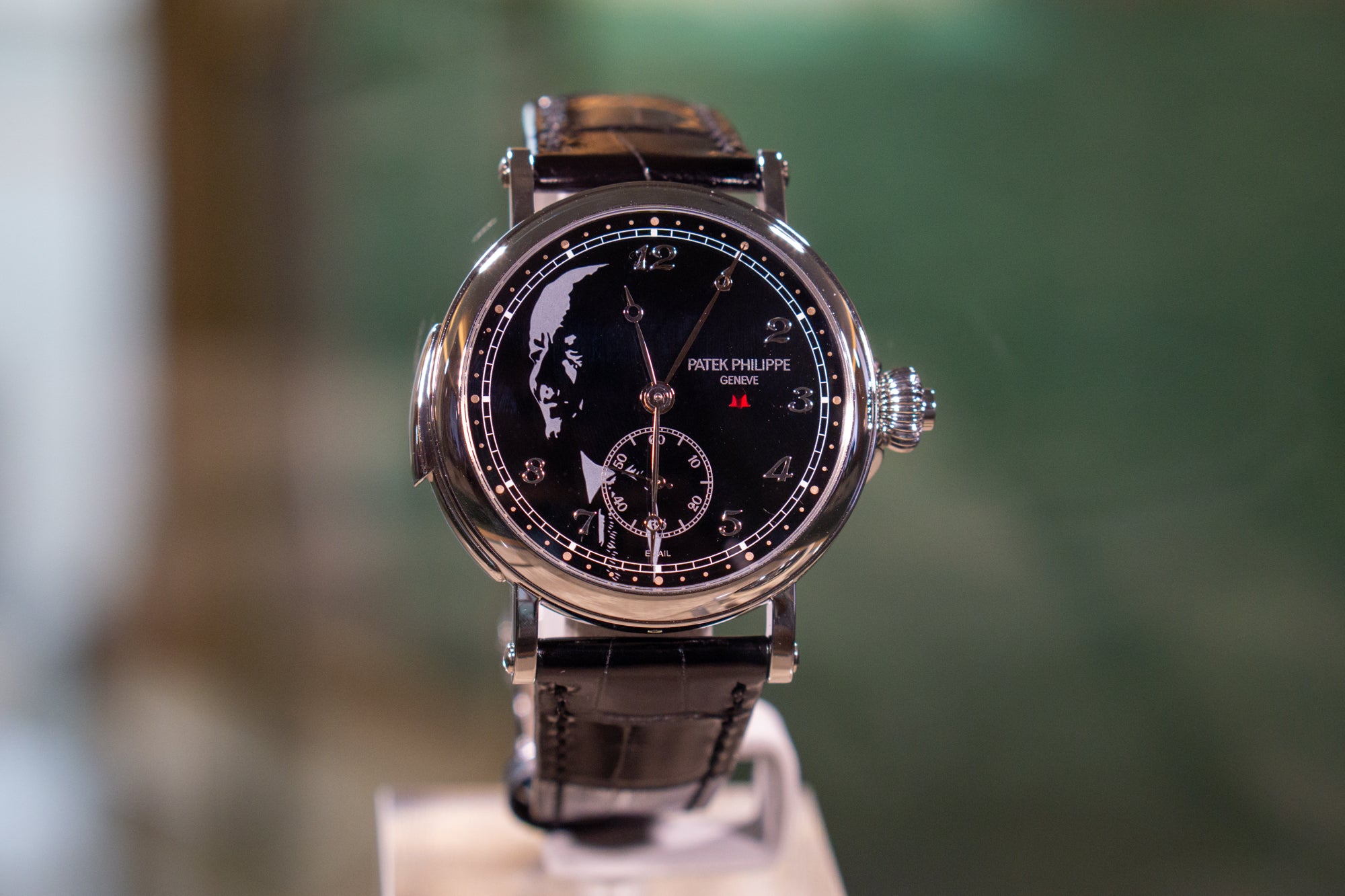
On our way down to the second floor, we saw our first watch: the Patek Philippe ref. 1938P. This platinum minute repeater displays a silver enamel profile of Philippe Stern’s face on an otherwise-black enamel dial. It’s one of 30 pieces commissioned by Philippe’s son Thierry in honor of his father’s 85th birthday. The hyper-limited chiming watch was just an aperitif for what was to come.
The Second Floor (Antiques Collection | 16th-19th Centuries)
On the second floor, we saw a smorgasbord of historically-significant timepieces from the 1500s onward. As we went from display case to display case, we watched table clocks get smaller, adopt nifty features like minutes hands, seconds hands, date complications, and so on. From marine chronometers to tourbillons, the often-extravagant evolution of European horology unfolded before our eyes.
As I mentioned in the intro, this tour felt like the fastest three hours of my life. We never spent more than a minute or so on any particular watch (as much as I would have liked to). As such, this article won’t be a deep dive on particular watches but more of a wide selection/photo report. If you’re interested in any one watch, let me know and I’ll do a standalone writeup.
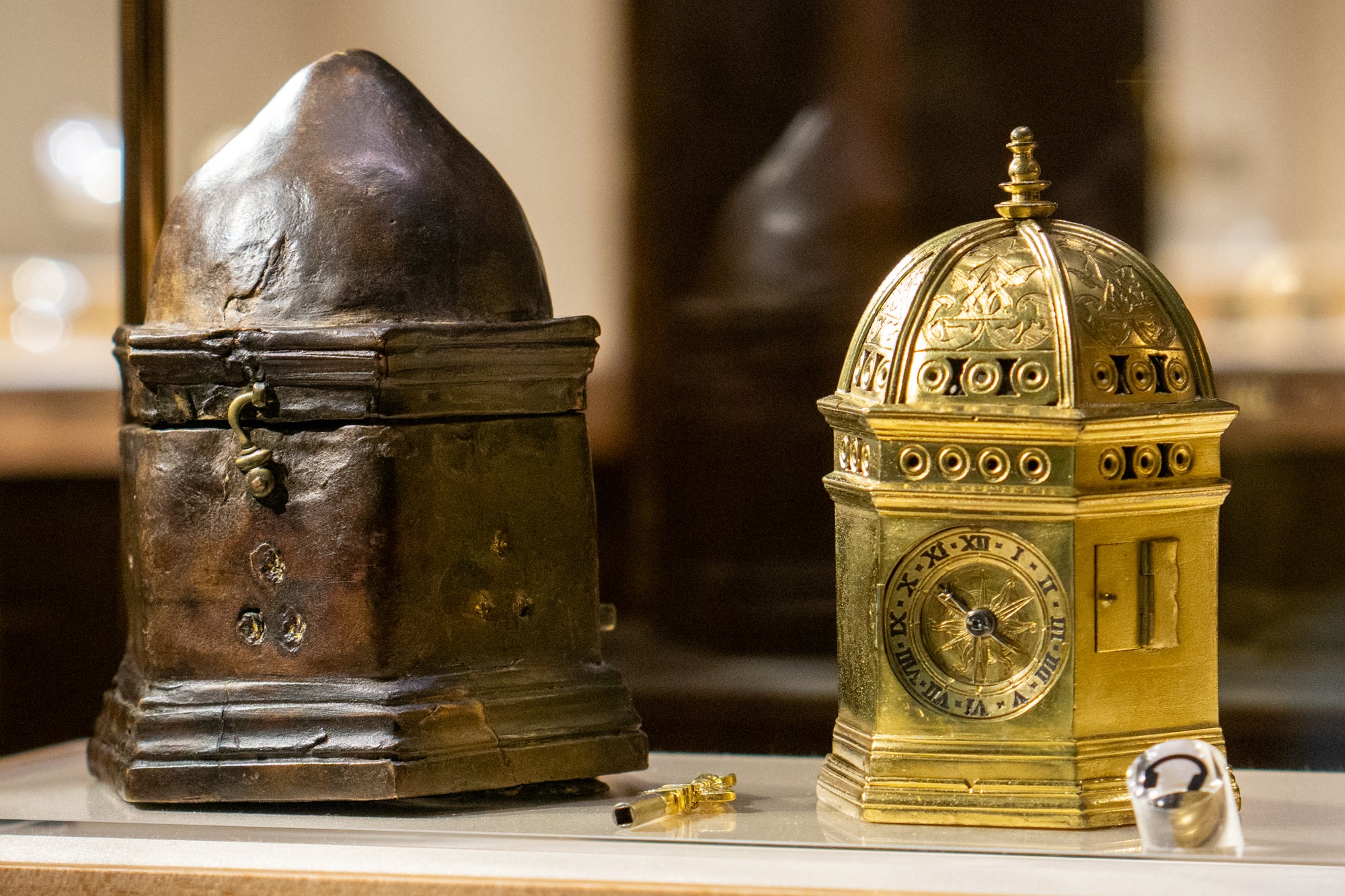
A Parisian table clock made by Nicolas Morel in 1530 (right) and its leather carrying case (left). This clock predates the minutes hand by about 40 years.
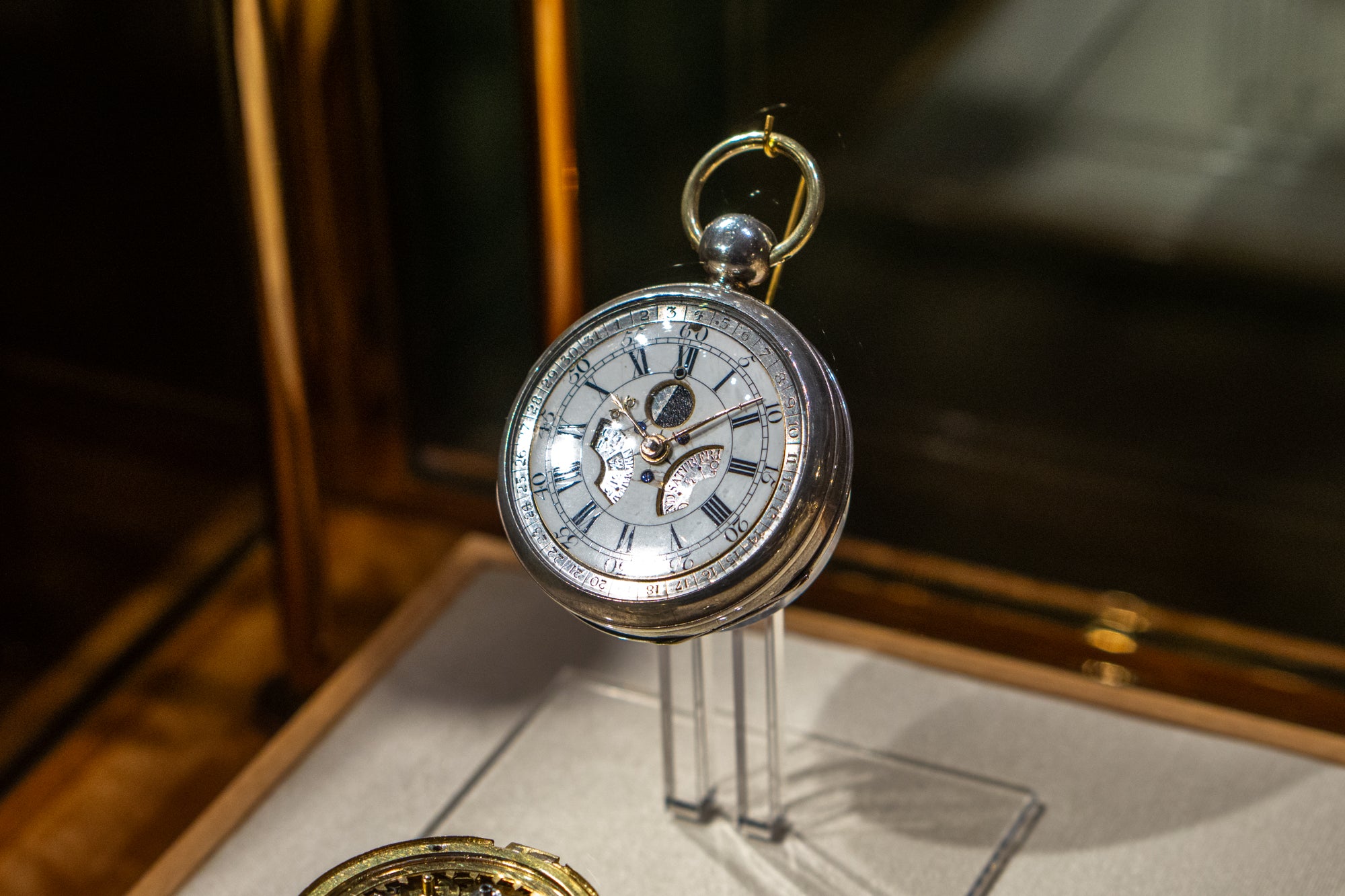
The first-ever perpetual calendar made by Thomas Mudge in 1762.
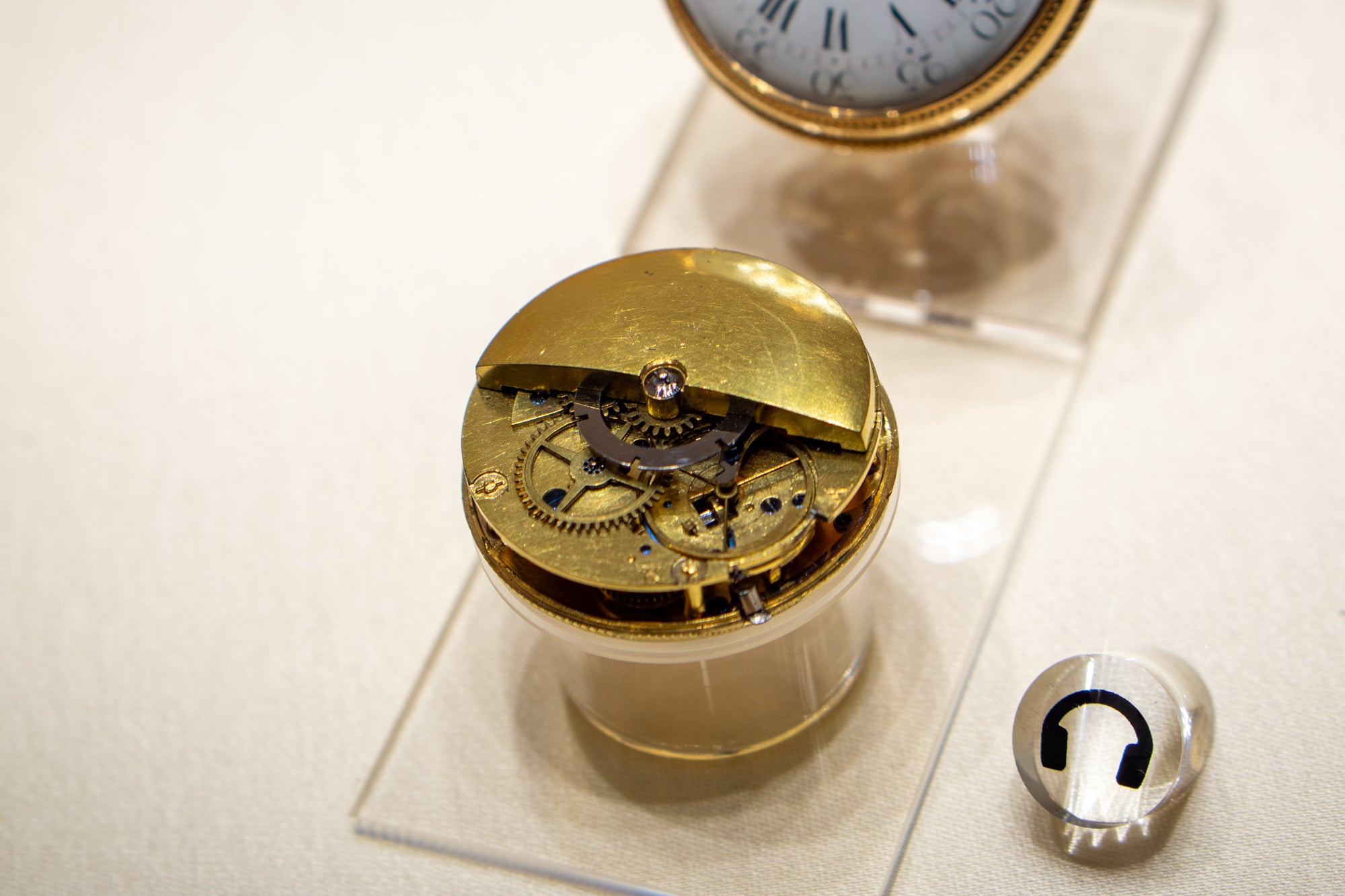
The first-ever automatic winding mechanism made by Abraham Louis-Perrelet in 1777. This movement was far ahead of its time; the technology wasn’t widely adopted until John Hardwood “invented” it in 1922.
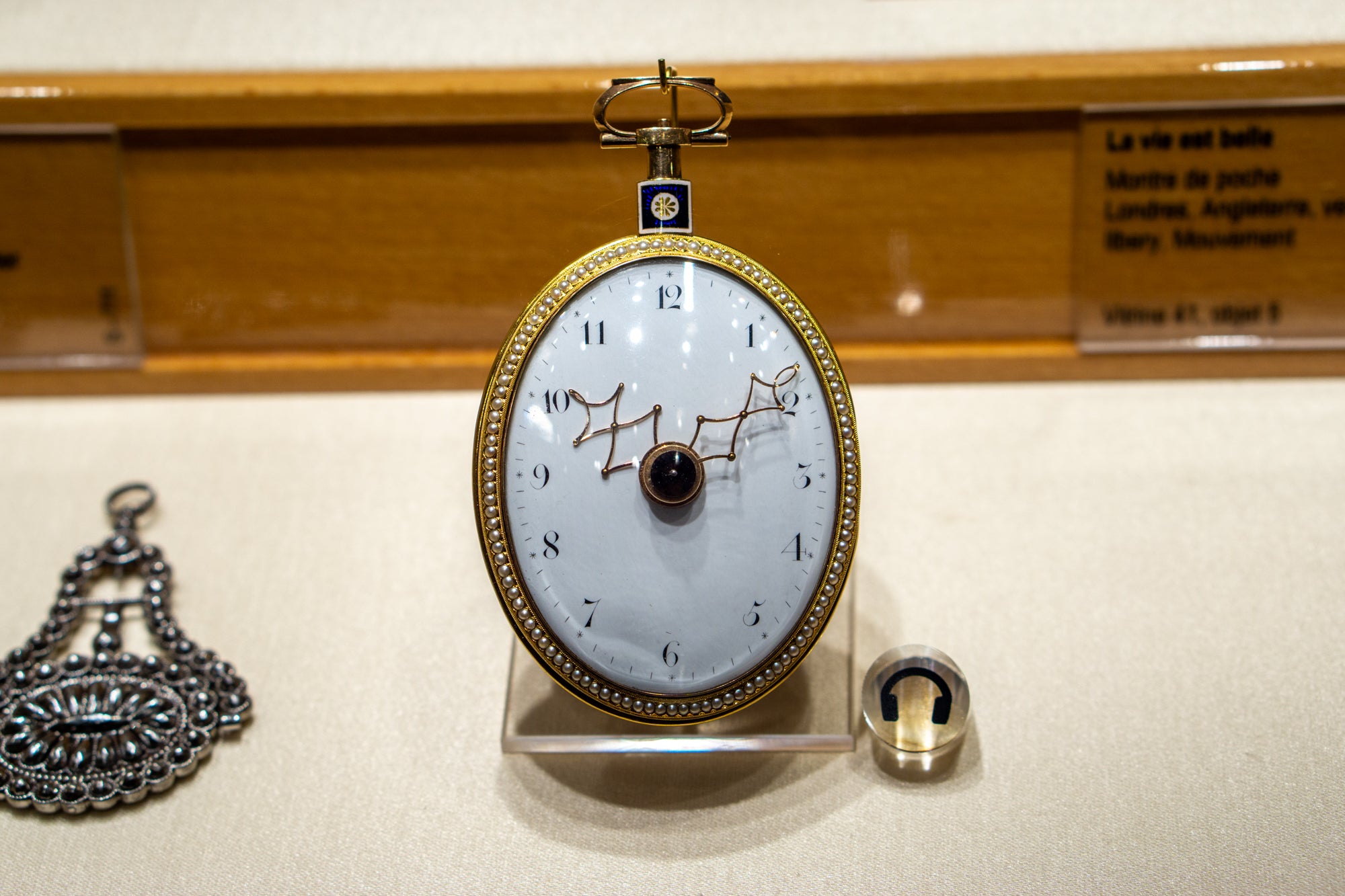
A pearl-laden pendant watch from 1795 with telescoping hands. These complicated wire hands expand and contract to perfectly meet the oval-shaped minutes track. Sorry Parmigiani, this watch beat your Toric Oval to the punch by about 200 years.
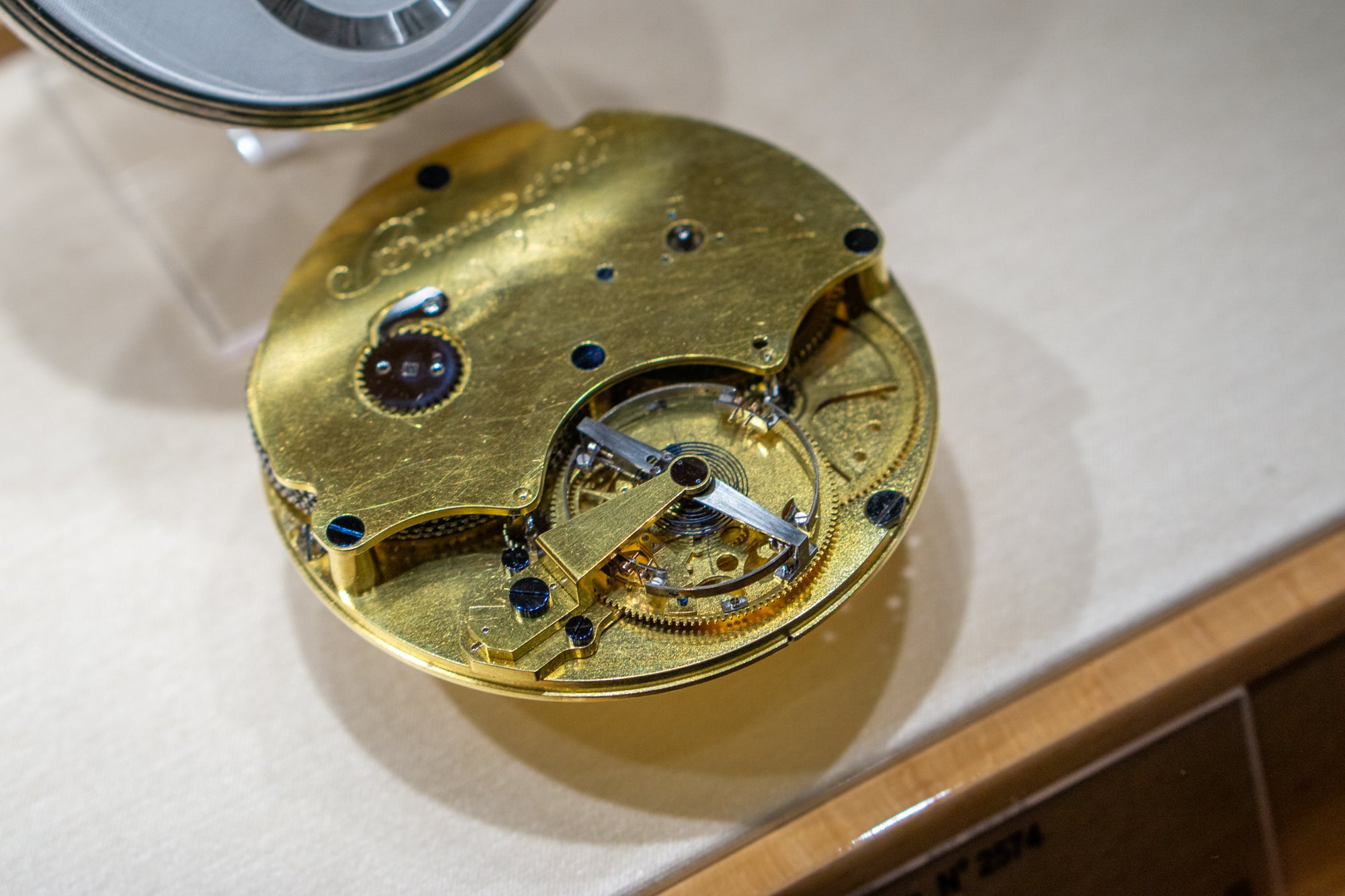
Eureka! Breguet invents the tourbillon in 1795. This example from 1816, no. 2574, was paired with a regulator dial.
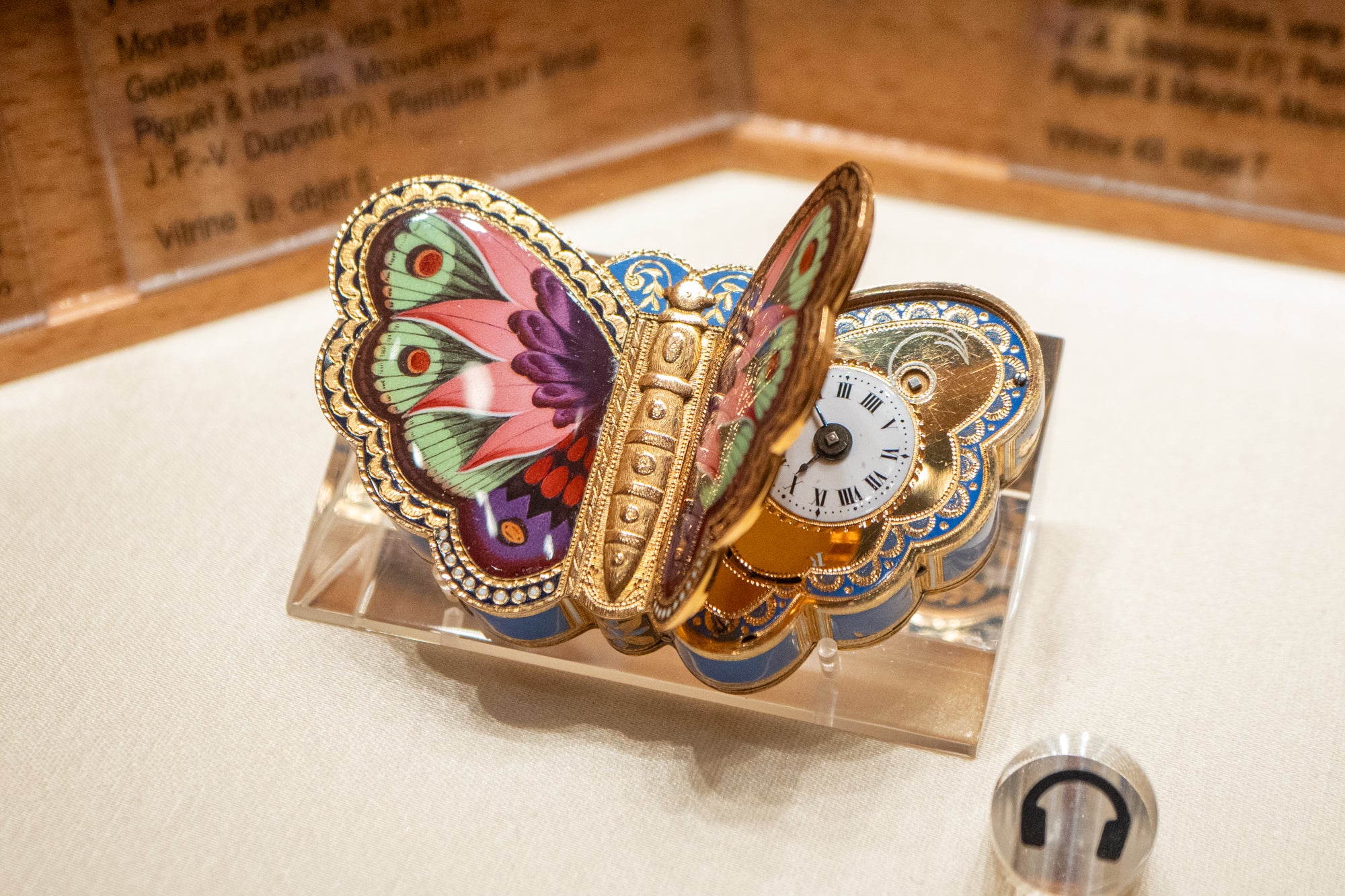

Perhaps the most ridiculous enamelwork I’ve ever seen. This watch case's depiction of Italy, Croatia, and the Adriatic Sea began as a flat gold surface. Rather than engrave names and borders into the gold, this artisan carved out the negative space surrounding each letter and line. This shallow negative space was filled with blue and black enamel paint before being fired. The case took multiple years to create.
The First Floor (Patek Philippe Collection | 1839 - Present Day)
On the first floor, the final of the tour, we finally saw some straps. This floor encompassed Patek Philippe's history as a watchmaker from 1839 onward. Again, exhaustive coverage of particular watches is not my goal for this article. I’ll include some of my favorites (in no particular order) before sharing my final thoughts on the museum.

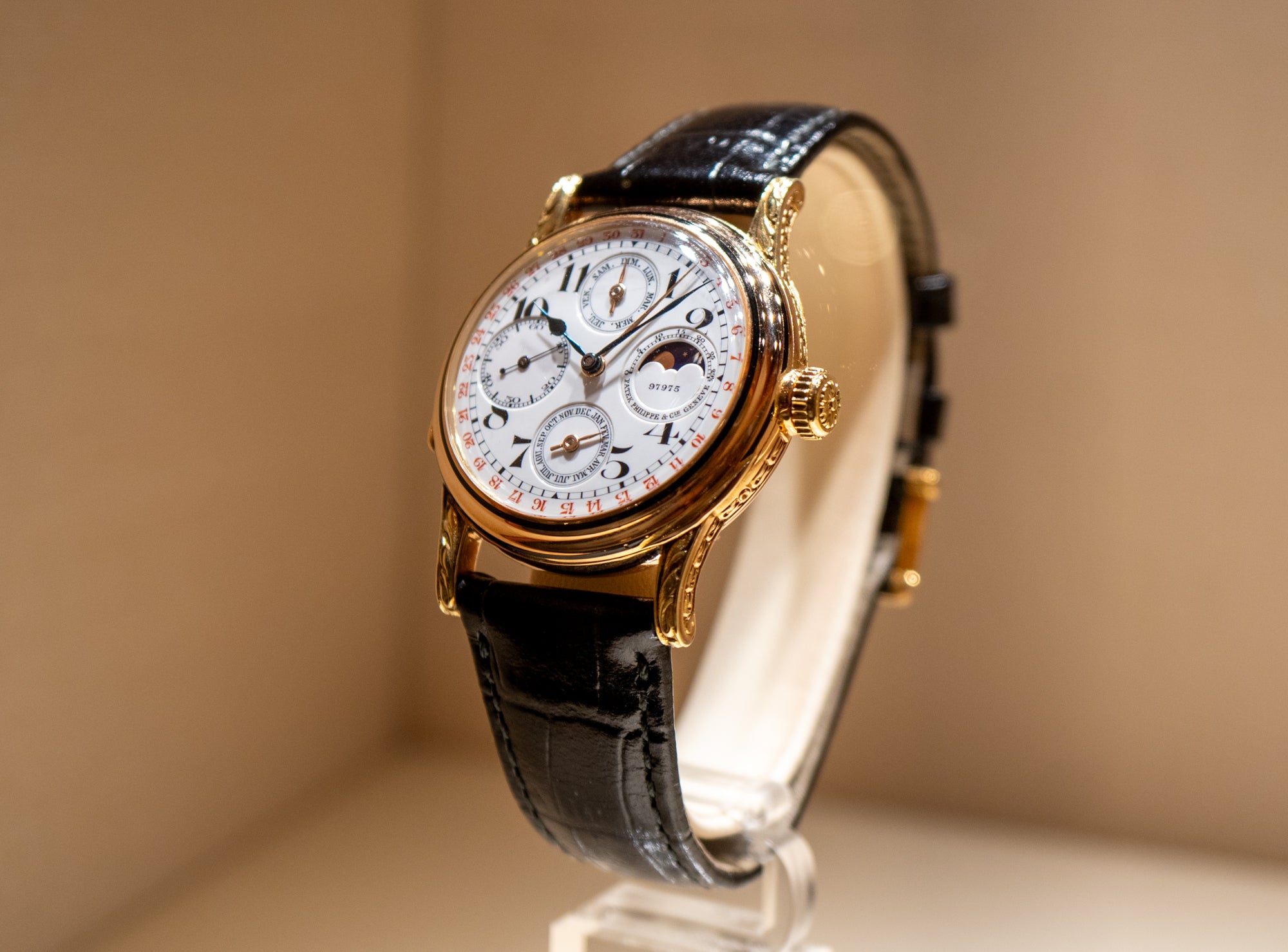

Speaking of perpetual calendar wristwatches . . .

One of many 1920s Art Deco watches that weren't even featured on our tour. I noticed them as we walked by, holding up our small group as I captured pictures. I could have stared at this particular example all day. Notice how its lugs and innermost case flanks are angled outward, presenting the dial like an open book.

John F. Kennedy's Patek Philippe desk clock. Made in the 1960s, the electronic clock displays three cities' time zones: Moscow, Washington D.C., and Berlin. Of course, this selection is emblematic of the Cold War. First, it displays the time in Moscow — the capital of the communist Soviet Union. In the middle, the clock displays JFK’s local time in Washington DC — the capital of the democratic United States. Finally, it displays time in Berlin — Germany's capital that was split down the middle both physically and politically. Following JFK's famous "Ich bin ein Berliner" speech in West Berlin, jeweler and Patek Philippe retailer Heinz Wipperfeld commissioned this clock as a gift for the US president.

The product of 100,000 fabrication hours, Patek Philippe's most complicated watch upon its 2014 release, the 175th Anniversary Patek Philippe Grandmaster Chime.
Final Thoughts on The Patek Philippe Museum
Much like our three-hour tour, the included watches are hardly the tip of the iceberg when it comes to experiencing the Patek Philippe Museum. The sheer volume (2500+ pieces) is staggering and worthy of multiple days of ogling. Even more staggering is the fact that this museum can largely be attributed to one man: Philippe Stern. Thanks to Stern's passion for horology, we all have access to some of the world's most impressive mechanical creations. I highly recommend you visit the Patek Philippe Museum if you get the chance.
It was a personal honor to visit this museum, and furthermore to receive press accreditation. Seeing such icons of horology is one thing, but having photo access and a private tour (led by an exceptional guide) was a once-in-a-lifetime experience. I'd like to thank the Patek Philippe Museum for having us. Next time, I need more than three hours.









Leave a comment